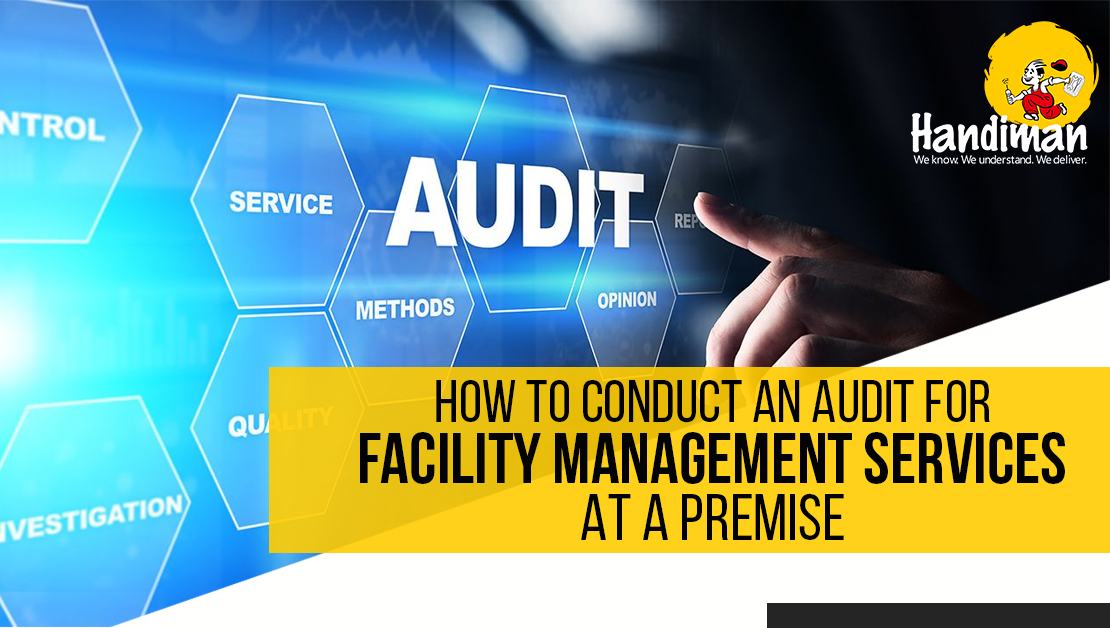
How To Conduct An Audit For Facility Management Services At A Premise
Building management efficiency assists Facility Managers in lowering operational and maintenance costs while also ensuring that necessary facilities such as HVAC, lighting, and machinery are energy efficient. An effective management audit assists businesses in determining whether or not their office buildings are operating at peak efficiency.
Auditable Facility Management assets support the business function operations. Using the advanced device, building managers and CRE (Corporate Real Estate) teams can allow access to maximum effectiveness and where improvements should be made.
The Audit Procedure
The initial step in a facilities management audit is to confirm the organization's core business. Following that, the facility manager should ensure that the department's support services are aligned with the organization's core business objectives. There are three major business goals:
1) Building Conditions: Building conditions usually include mechanical and electrical systems, as well as site infrastructure. The total cost of repairs or improvements can be divided according to priority.
2) Direct maintenance and operations services: These are the services required to support the organization's core business, which includes both personnel and fixed annual expenditures.
3) Services for indirect maintenance and operation: These services are associated with activities that aid in the facility's repair and maintenance. Examples include IT support, auditing, facility construction, engineering and design delivery and shipping, and so on.
How to Conduct a Building Management Audit
A building management audit focuses on current building maintenance and operations to ensure efficient building work. Let us look at the audit in-depth assessment to determine the effectiveness of on-site facility management.
1- Examine your facility management processes
Initiate your construction audit by evaluating the existing facility management processes. This includes maintenance methods, utilities, energy consumption, security, amenities, and cleaning.
2- Recognize Your Portfolio
The needs and expectations of employees necessitate continuous collaboration and occupancy patterns. Continuously assessing physical space is being adopted as hybrid working practices shape the future of workplaces.
3- Examine the technology in your workplace
As the advanced grid keeps driving innovative thinking in facilities management, businesses should begin to recognize how their current infrastructure contributes to building operational effectiveness and where technology can be used to enhance or simplify how the building is managed. New innovations can then be used to automate cleaning, energy usage, and other facets of facility management. Then, smart technology can be used to control cleaning, energy consumption, and other aspects of facility management.
4- Examine your organization's policies
Your workplace policies are an important part of your company. Companies must comprehend how their workplace policies affect employee building utilization as well as employees. Nevertheless, these could be enhanced for improved operational quality.
5- Identify areas where building management can be improved
Using smart building technology to guide budget and ongoing initiatives to reduce building costs, such as utility use, security, and air quality. IoT (Internet of Things) devices that track employee behavior can also track and optimize energy consumption, cleaning services, productivity, and other factors.
CONCLUDING
A facility management auditor must be aware of industry-specific codes and standardization for handling the process efficiently. A healthier and more cost-effective building that is tailored to your sustainability goals stands to benefit both customers and the bottom line.
The audit may provide the organization with a way to track costs from year to year. Audits can only meet future challenges and add strategic value to the organization by improving support activities and services.
